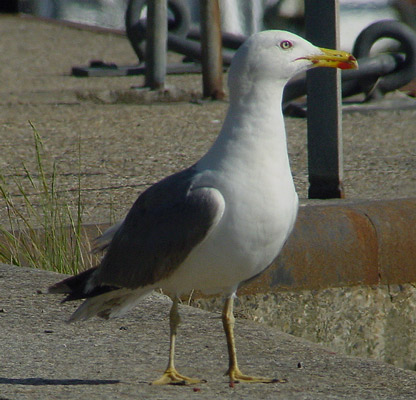 Yellow-legged
Gull - Geelpootmeeuw (L. michahellis): sub-ad July
Yellow-legged
Gull - Geelpootmeeuw (L. michahellis): sub-ad July
(last update: 08 december 2003)
YLG
1cy May
YLG
1cy June
YLG
1cy July
YLG 1cy August
YLG 1cy September
YLG 1cy October
YLG 1cy November
YLG 1cy December
YLG
2cy January
YLG 2cy February
YLG 2cy March
YLG 2cy April
YLG 2cy May
YLG 2cy June
YLG 2cy July
YLG 2cy August
YLG 2cy September
YLG 2cy October
YLG 2cy November
YLG 2cy December
YLG
3cy January
YLG 3cy February
YLG 3cy March
YLG 3cy April
YLG 3cy May
YLG 3cy June
YLG 3cy July
YLG 3cy August
YLG 3cy September
YLG 3cy October
YLG 3cy November
YLG 3cy December
YLG
sub-ad Jan.
YLG sub-ad Feb.
YLG sub-ad March
YLG sub-ad April
YLG sub-ad May
YLG sub-ad June
YLG sub-ad July
YLG sub-ad Aug.
YLG sub-ad Sept.
YLG sub-ad Oct.
YLG sub-ad Nov.
YLG sub-ad Dec.
YLG
adult January
YLG adult February
YLG adult March
YLG adult April
YLG adult May
YLG adult June
YLG adult July
YLG adult August
YLG adult September
YLG adult October
YLG adult November
YLG adult December
photo 1940: Yellow-legged Gull michahellis sub-adult, July 10 2002, Etaples, France (50.43N,01.37E).
A sub-adult michahellis with active moult in the tail-feathers and some black on the cutting edge of the lower mandible. The white tip on P10 doesn't merge with the mirror but is separated by a broad sub-terminal band. Some features may indicate this bird is in 4cy:
- The bill has an obvious black mark on the upper mandible near the gonydeal angle.
- The red spot on the gonydeal angle doesn't reach the upper mandible. In older birds this red spot extends on the upper mandible.
- The iris is pale yellow, unlike the deep yellow iris in most older birds (5+cy birds).
- The wing-coverts have a brown hue, especially visible in the outer greater coverts, median coverts and lesser coverts in the carpal edge.
- The tail show some small black spots on the tips of the tail-feathers.
